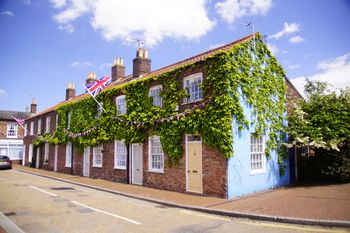Extensive Urban Survey - Lincolnshire
Lincolnshire County Council, 2024. https://doi.org/10.5284/1118294. How to cite using this DOI
This work is licensed under a Creative Commons Attribution 4.0 International License.
Primary contact
Lincolnshire County Council
County Offices
Newland
Lincoln
LN1 1YL
Resource identifiers
- ADS Collection: 6576
- DOI:https://doi.org/10.5284/1118294
- How to cite using this DOI
Introduction

The Lincolnshire Extensive Urban Survey project has been undertaken, between 2018 and 2022, as part of the national programme of Extensive Urban Surveys (EUS) promoted and funded by Historic England. The survey has covered a total of 30 towns. The main aim of the project was to synthesise and increase understanding of the historical development and the legibility of historic character for each of the survey towns in the historic county of Lincolnshire. The towns have also been evaluated to assess their historic character and identify the nature and extent of surviving historic environment assets, whether as standing structures, below ground archaeological deposits or in the surviving historic town plan.
The results are held within the Historic Environment Records (HER) of the three local authorities whose areas were covered by the survey - Lincolnshire County Council, North Lincolnshire Council and North-East Lincolnshire Council. These results are available in the form of a written report for each town and a spatial GIS dataset. Each report contains a historic, archaeological and developmental background of each town as well as a historic character assessment. The GIS data set contains information showing the time-depth and character of the town, as recorded in individual chronological building blocks (polygons) which together demonstrate the wider history of the place. The project is also part of a ‘closed research loop’ and has taken the data from the HER to support the research of the town and this data is being re-entered into the HER with additional corrections and embellishment, which has improved the dataset and is part of on-going updating works which are carried out on the HER to service the archaeological advice provided within the planning process.






